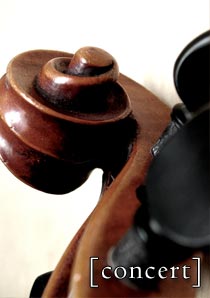The Shores of Light
| Year Composed: | 2011 |
| Instrumentation: | 2+picc.1+eh.2.2./4.3.3.1/timp+3 perc/hp/strings |
| Duration | 13 minutes |
Program Notes (Abstract)
The Shores of Light was composed in partial fulfilmment of the Doctor of Musical Arts degree at the University of Toronto. It is an orchestral composition which seeks to explore musical processes of coherence and evolution at a deeper level. The piece charts the journey of a single musical identity across a shifting aural landscape. This thematic idea — a strongly modal melody reminiscent of both plainchant and folksong, which serves as both the initial premise and foundation for the piece — is rooted in serene yet archaic stasis. After a brief introduction, the theme is subjected to tremendous pressure by external forces, which eventually crush it beyond recognition via a series of 'destructive' harmonic, contrapuntal, and acoustic procedures. Reduced to a shadow of its former self, the theme then undergoes a series of transformations, culminating in restoration — not to its original form, but to a new identity which functions as part of a whole, a 'master' entity whose components have been discreetly but gradually cohering throughout. This final realization is glimpsed but not necessarily fulfilled (hence the "shores of light") and the work, while striving at every register to return to its initial tonic, ends on a note that suggests (somewhat ominously) the possibility of a cyclical process.
It is the essential tension between hierarchical complexity (tonality) and disorder (perceptual dissonance generated either by highly chromatic aggregates, acoustic saturation, or both) which plays the most crucial role in this discourse. The evolution toward greater and greater cohesion is achieved, necessarily, in opposition to the chaotic undercurrent which threatens to overwhelm or shatter the ‘cohering’ elements at every turn. The final chorale is a triumph of the 'meek,' as the elements of noise and distortion (ie. disorder) are stripped away to reveal an image of luminous simplicity.
The use of tonal and non-tonal material as metaphors for order and chaos seems to betray an arbitrary initial condition — after all, there is no explicit logical connection between these parameters. But order, like beauty or meaning, is a perceptual phenomenon that transcends its processes. For me, the true complexity of the tonal hierarchy lies in its emergent qualities — the layers of content that emerge from a highly structured syntax. Thus, the gradual accretion of jumbled musical letters into recognizable words, then coherent sentences, then paragraphs imbued with specific meaning, carries with its own symbolism and structural significance.

